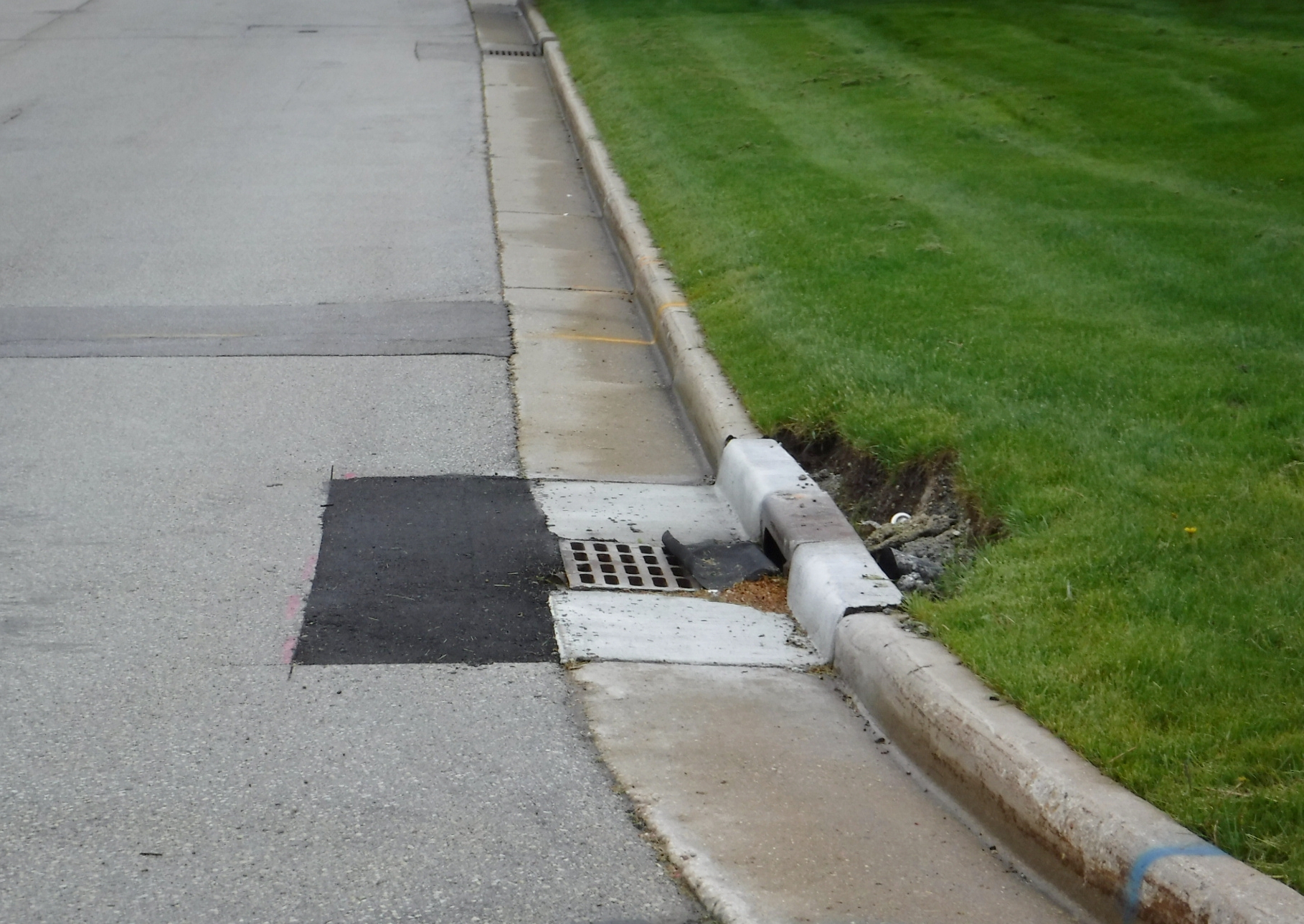Many municipalities face the problems of declining roadway infrastructure and limited funds to pay for repairs. Undertaking proper pavement maintenance at the appropriate time produces overall savings to the community. The City of Pewaukee faced such a problem with deteriorating storm inlets and adjacent curb and gutter sections. In many cases, this was causing pavement failures around the inlets. In other cases, water was ponding on the street causing unsafe conditions in winter and hastened pavement failures. With limited funding for its road repair program, the City used an innovative approach to resolve this problem.
Forming a plan by Leveraging GIS
In 2012, the City did a test program to analyze a limited number of inlets in an industrial area, while collecting geographical information system (GIS) data on the inlets at the same time. The location of the inlets was surveyed, and the inlet condition was recorded as “Good”, “Fair”, or “Poor”. These ratings, while simplistic, would give the city an indication of further inspections that may be needed.
The City embarked on a City-wide inventory of all utility assets beginning in 2014. The initial GIS inlet condition survey was then used to determine which inlets needed immediate repair. Additionally, the City looked at it’s Roadway Capital Improvement Program (CIP) and coordinated repairs of inlets with road projects. When possible, the City will complete repairs one year in advance of road projects.
Inlet repair program Improvements
The City also changed the way it repaired storm inlets. Much of the inlet repair was due to de-icing chemicals damaging the concrete rings and mortar in the inlet. When this occurred, the roadway base migrated through the failed inlet causing settlements, pavement failures, and debris accumulation in the storm sewers.
The City made some significant changes to it’s inlet repair program. In 2015, they began to wrap all inlet repairs in a type SAS geotextile fabric. This wrap, which extends from 1-inch below the top of the casting to 1-inch below the repair, prevents the migration of road base into the inlet. In 2016, they started to use polypropylene adjusting rings on inlets when feasible. This helps to eliminate the failure of the concrete adjusting rings and mortar.
Funding Repairs with the Storm Water Utility
The funding mechanism utilized for the repairs is the City’s Storm Water Utility. The cost of the inlet repair, adjacent curb and gutter replacement, and pavement repair is borne by the Utility. The justification for this is that all the adjacent areas are also part of the storm water conveyance system. The overall result is that the City is now beginning to repair inlets well in advance of road programs to extend the life of road pavements to delay complete reconstruction.
For assistance with creative ways to complete projects using alternative repair methods, creating or utilization of Storm Water Utilities, or GIS data, contact an expert at R/M today.
Learn More
Long-Range Capital Improvement Planning: How to Coordinate your Infrastructure Puzzle
Sign up to watch our complimentary webinar to learn how a long-range CIP balanced with an infrastructure and operations review will help guide where and when spending should occur.
Wed, May 23, 2018
12:00 PM – 1:00 PM CDT
Online
Register Now
About the Author
Kenneth R. Ward, P.E.
VP/Office Manager
Ken has been with Ruekert & Mielke, Inc. (R/M) since 1984. He has worked as a primary client contact, project manager and project engineer on a variety of municipal infrastructure projects including streets, alleys, sewers, storm water management, bike route trails and water mains. He has an extensive background in construction inspection, public involvement and public assessment of municipal improvements.






